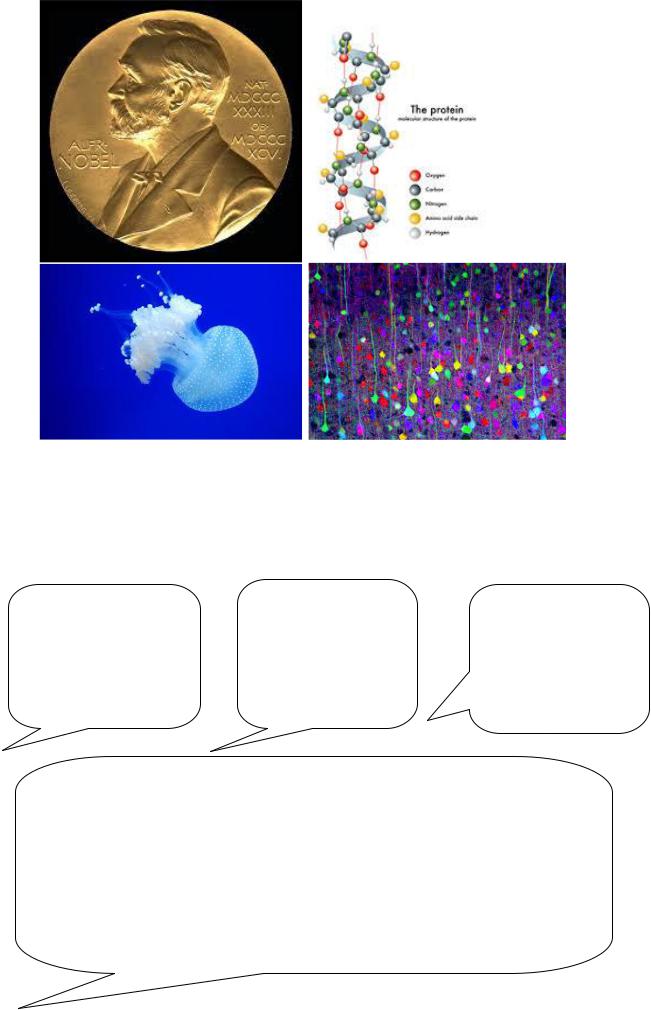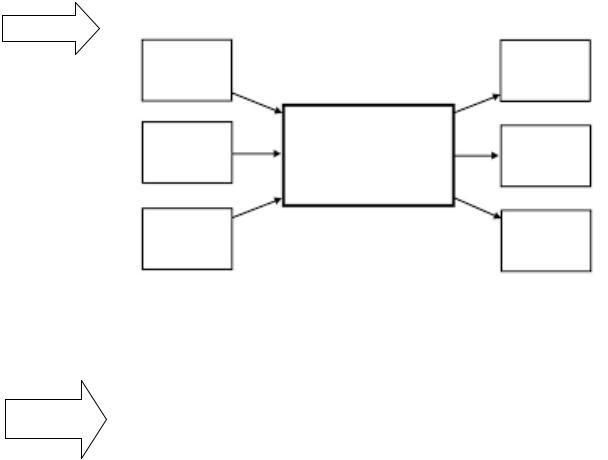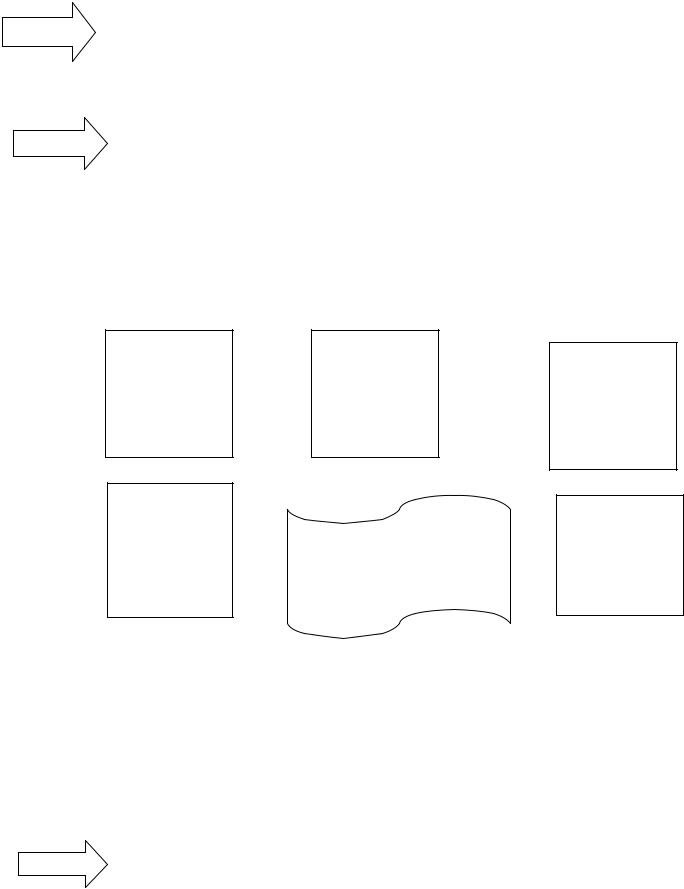
First steps in biotechnology. Первые шаги в биотехнологии
.pdf
|
8 isolate |
i any organism that exists by preying upon |
|
|
other organisms |
|
9 coastal |
j to swim with a portable breathing device |
|
|
for free-swimming divers |
|
4. You are going to watch the video about marine biotechnology. Make a |
|
Predict |
list of the things you think you’ll see in the video. |
|
WHILE WATCHING
5. Watch the video https://www.youtube.com/watch?v=KTy_0dzLiu8 . Answer the questions;
1 What applications of ocean water are mentioned in the video? 2 What are the greatest predators of the ocean?
3 What helps the scientists study the links between marine and nonmarine viruses?
4 What have marine chemists recently isolated?
5 What marine animal can potentially help fight the pain without side effects?
6 Name one of the marine biotechnology goals.
7 How can the researchers reach this goal?
6. Watch the video again. Match the numbers and the facts.
20% |
80% |
1 billion 10 billion |
40 % |
|
|
|
|
We only represent _________of world’s living things. Our oceans hold more than
__________ of the earth’s organisms. Scientists estimate that for every liter of ocean water there are ________ bacteria. And hold on to your sunglasses there are _______ viruses. But researchers estimate about ______ of coast waters are full of pollutants and harmful bacteria.
DISCUSSION
7.Work in pairs. Discuss whether there are many researches of marine organisms. What are they?
8.Complete “Watch and respond” graphic organizer (Fig. 29).
Evaluate
81

WATCH & RESPOND Title of video
_________________________________
What was your favorite part of the video?
_______________________________________
_______________________________________
_______________________________________
_______________
Why?
_______________________________________
_______________________________________
_______________________________________
_______________
What is one thing you didn’t know but now know from watching the video?
_______________________________________
_______________________________________
Fig.29
____________________
Additional Comments
_______________________________________
_______________________________________
Fig. 29
PREPARING TO READ
1. You are going to read the text “Examples of Marine Biotechnology Suc-
Predict cesses”.
TIP: Before you do write the prediction, follow the instruction and use the clues (Fig.30) for help.
1 Read the title.
2 Read the first sentence of the text.
3 Look at the pictures.
82

Fig. 30
4 Fill in the notes with clues to what the text will be about. 5 Think about the clues you found.
6 Predict what the text will be about.
7 Write the prediction below.
Clues from the title |
Clues |
Clues from |
|
from the first sen- |
|||
___________________ |
the pictures |
||
___________________ |
tence_____________ |
__________________ |
|
___________________ |
__________________ |
__________________ |
|
___________________ |
__________________ |
__________________ |
|
___________________ |
__________________ |
__________________ |
My prediction
I think this text will be about
___________________________________________________________________
___________________________________________________________________
___________________________________________________________________
___________________________________________________________________
___________________________________________________________________
___________________________________________________________________
___________________________________________________________________
___________________________________________________________________
83

2. Discuss your ideas with your partner / the group.
WHILE READING
3. Read the text, check your prediction ideas.
Examples of Marine Biotechnology successes
The luminescent properties of the jellyfish Aequorea victoria led to the characterisation of the green fluorescent protein (GFP). Martin Chalfie, Osamu Shimomura, and Roger Y. Tsien were awarded the 2008 Nobel Prize in chemistry on 10 October 2008 for their discovery and development of the green fluorescent protein. The GFP and the luciferase enzyme from Vibrio fischeri have widespread uses in molecular biology as a reporter protein. By using DNA technology, researchers can now connect GFP to other interesting, but otherwise invisible, proteins. This glowing marker allows them to watch the movements, positions and interactions of the tagged proteins .
For instance, Jeff Lichtman and Joshua Sanes, researchers at the Harvard Brain Center, have created transgenic mice with fluorescent multicolored neurons. The photographs of the mouse brains appeared in the November 1, 2007 issue of Nature. The mice created by a genetic strategy termed "brainbow" will have a great effect on neuroscience. Using a brainbow of colors, researchers will now be able to map the neural circuits of the brain. The individually colored neurons will help define the complex tangle of neurons that comprise the brain and nervous system. By creating a wiring diagram of the brain, researchers hope to help identify the defective wiring found in neurodegenerative diseases such as Altzheimer's and Parkinson's disease.
Marc Zimmer.Green Fluorescent Protein. (November, 2013) ©
4. Read the text again and collect new or interesting words. Write the
words in the wallets (Fig.31).
Reading for details
Words that make me wonder!
____________________________________________
84

Words that excite my ears and eyes!
____________________________________________
Words that look like other words I know!
___________________________________________
___________________________________________
___________________________________________
Fig. 31
POST READING
5. Give the summary of the text using the words from the wallets.
TIP: use http://www.english-at-home.com/business/how-to-write-a-summary/ for help.
DISCUSSION
|
6. Make a research about other marine creatures used in marine biotech- |
Investigate |
nology. Use the research graph (Fig.32) for help. |
TIP: if necessary use http://www.marbef.org/wiki/Category:Examples_of_Marine_Biotechnology_success es
MARINE CREATURE RESEARCH
NAME: |
PICTURE |
|
|
WHERE DOES IT LIVE?
85

HOW IS IT USED BY MARINE BIOTECHNOLOGISISTS?
WHAT SPECIAL PROPERTIES DOES IT POSESS?
INTERESTING FACT №1
INTERESTING FACT №2
INTERESTING FACT №3
Fig. 32
Understanding key vocabulary
PREPARING TO LISTEN
1. Look at the vocabulary in the word cloud (Fig. 33). You are going to listen to the podcast. What do you think it is about?
Fig. 33
86

2. Work in pairs. Discuss your ideas with the partner. Complete the mind
Outline |
map (Fig. 34). |
|
Fig. 34
Listening
for gist
WHILE LISTENING
3.Listen to the podcast http://www.npr.org/player/v2/mediaPlayer.html?action=1&t=1&islist=f
alse&id=163606540&m=163606574 and check your answers to exercise 1. The podcast is about (few variants are possible):
a Producing biofuels from algae doesn’t have a lot of potential b An acre of algae ponds would produce enough fuel to supply
maybe 10 cars.
c Algae cultivating doesn’t need any special conditions or recources. d It is challenging to turn algae into a sustainable source of energy. e No algae company are existing now.
4. Listen again and complete the sentences.
1 There's ___________and investment in the process of extracting oil from algae and turning it into fuel for vehicles and airplanes.
2 ________ you don't want to consume more energy than you're going to get back in the form of fuel.
3 This is not _______that everybody is going to grow algae in their backyard and be able to fill their fuel needs.
4 _____ the whole industry has been thinking hard about ways to avoid these pitfalls
5 But these are early days, with companies like Sapphire Energy finding ideal settings, like this abandoned farmland in _________.
6 We can ___________ to be such a successful company that we are - produce a billion gallons into the renewable fuel pool.
7 It's ______ impressive in what they have achieved. 8 I _________this industry has a lot of potential.
87

Distinguishing fact from opinion
5. Which phrases from exercise 4 introduce opinions and which introduce facts? Add the phrases into the grouping diagrams (Fig. 35) below.
FACT
OPINION
Fig. 35
DISCUSSION
6.Work in pairs. Discuss whether algae as car fuel have future. Why / Why not? Give your opinion and find supporting facts.
7.Present the results of your discussion to the group.
CRITICAL THINKING
Plan a conference about threats to oceans and coasts. Discuss and find solutions to any possible problems.
88

1. Work in small groups. Discuss the questions about problem solving.
Prepare
1 What is the best way to think of different ideas? Give reasons for your thoughts.
2 Is it important to support your ideas with more information? Why / Why not?
2.We often use different phrases to invite others to speak, to interrupt or continue speaking when someone stopped us. Write the phrases (a-j) in the correct column of the table below.
a What is your opinion? b Can I finish?
c I’d like to finish my point. d Can I just cut in there?
e Sorry but I have to interrupt you and say … f You haven’t said much. What do you think? g Why don’t you start us off …
h Sorry but can I just say …
i Would anybody to say anything else about …? j Let me just finish what I was saying.
Inviting someone to |
Interrupting |
Continuing to speak |
speak |
|
|
|
|
|
3. Divide the phrases into those we use to start a discussion and those we use to finish a discussion. Write S (start) and F (finish).
1 Let me begin by asking …
2 Let me finish his off by saying …
3 We’ll begin today’s discussion with a look at …
4 Would you like to start us off?
5 So to conclude …
6 Finally …
7 In conclusion I would like to say …
8 To sum up …
89

Discuss
Analyze
4.Work in small groups and discuss the topics below. Start and finish discussing the topic with the phrases from exercise 3.
UNSUSTAINABLE FISHING
5. Work in small groups. You have to organize a conference. Follow the steps below (Fig. 36).
Create the question chart to answer the following questions: 1 What your conference will be about?
2 When would it be held?
3 Who would you invite?
4 Where the conference will be?
5 How will you invite the guests?
Who? What?
When?
Where?
How?
Conference (name)
Fig. 36
Make sure that you discuss possible problems and solutions.
Use the language from exercises 2 and 3 in your discussion.
6. Write the plan of the conference.
7. Work with another group. Take turns to present your ideas and to listen.
Which plan is the best? Why?
Present
90
